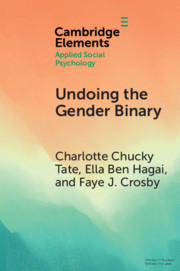223 results
61 Neurocognitive functioning improves in former athletes with sport-related concussion and repetitive head hits following transcranial photobiomodulation treatment
-
- Journal:
- Journal of the International Neuropsychological Society / Volume 29 / Issue s1 / November 2023
- Published online by Cambridge University Press:
- 21 December 2023, pp. 166-167
-
- Article
-
- You have access
- Export citation
A Review of the Metabolism and Relevance to Form and Formulation of Ketamine
-
- Journal:
- European Psychiatry / Volume 66 / Issue S1 / March 2023
- Published online by Cambridge University Press:
- 19 July 2023, p. S842
-
- Article
-
- You have access
- Open access
- Export citation
Implementation of Multi-level Interventions to Mitigate Risk of SARS-CoV-2 Delta Variant at a PUBLIC UNIVERSITY in Southern United States
-
- Journal:
- Disaster Medicine and Public Health Preparedness / Volume 17 / 2023
- Published online by Cambridge University Press:
- 27 July 2022, e230
-
- Article
-
- You have access
- Open access
- HTML
- Export citation

Undoing the Gender Binary
-
- Published online:
- 19 May 2020
- Print publication:
- 04 June 2020
-
- Element
- Export citation
P054: Interventions aimed at improvement in emergency department related transitions in care for adult patients with atrial fibrillation and flutter: a systematic review
-
- Journal:
- Canadian Journal of Emergency Medicine / Volume 20 / Issue S1 / May 2018
- Published online by Cambridge University Press:
- 11 May 2018, p. S76
- Print publication:
- May 2018
-
- Article
-
- You have access
- Export citation
Modern Pollen-Rain Characteristics of Tall Terra Firme Moist Evergreen Forest, Southern Amazonia
-
- Journal:
- Quaternary Research / Volume 64 / Issue 3 / November 2005
- Published online by Cambridge University Press:
- 20 January 2017, pp. 284-297
-
- Article
- Export citation
Bathymetry and geological setting of the South Sandwich Islands volcanic arc
-
- Journal:
- Antarctic Science / Volume 28 / Issue 4 / August 2016
- Published online by Cambridge University Press:
- 18 March 2016, pp. 293-303
-
- Article
- Export citation
Attribution of Salmonella enterica serotype Hadar infections using antimicrobial resistance data from two points in the food supply system
-
- Journal:
- Epidemiology & Infection / Volume 144 / Issue 9 / July 2016
- Published online by Cambridge University Press:
- 03 February 2016, pp. 1983-1990
-
- Article
-
- You have access
- HTML
- Export citation
Tackling the problem of blood culture contamination in the intensive care unit using an educational intervention
-
- Journal:
- Epidemiology & Infection / Volume 143 / Issue 9 / July 2015
- Published online by Cambridge University Press:
- 12 November 2014, pp. 1964-1971
-
- Article
-
- You have access
- HTML
- Export citation
Contributors
-
-
- Book:
- Acute Care and Emergency Gynecology
- Published online:
- 05 November 2014
- Print publication:
- 30 October 2014, pp ix-xiv
-
- Chapter
- Export citation
Contributors
-
-
- Book:
- Acute Medicine
- Published online:
- 05 November 2014
- Print publication:
- 30 October 2014, pp viii-x
-
- Chapter
- Export citation
A Systematic Review of Early Prognostic Factors for Return to Work After Traumatic Brain Injury
-
- Journal:
- Brain Impairment / Volume 8 / Issue 2 / 01 September 2007
- Published online by Cambridge University Press:
- 21 February 2012, pp. 101-142
-
- Article
- Export citation
Recovery of Impairments After Severe Traumatic Brain Injury: Findings From a Prospective, Multicentre Study
-
- Journal:
- Brain Impairment / Volume 7 / Issue 1 / 01 May 2006
- Published online by Cambridge University Press:
- 21 February 2012, pp. 1-15
-
- Article
- Export citation
Short Note: The application and benefits of digital geological mapping in Antarctica
-
- Journal:
- Antarctic Science / Volume 23 / Issue 4 / 12 July 2011
- Published online by Cambridge University Press:
- 05 April 2011, pp. 387-388
-
- Article
- Export citation
Rogues' Gallery of Contributing Authors
-
-
- Book:
- Core Clinical Competencies in Anesthesiology
- Published online:
- 06 July 2010
- Print publication:
- 12 April 2010, pp xi-xii
-
- Chapter
- Export citation
Hospitalization Rates of Nursing Home Residents and Community-Dwelling Seniors in British Columbia*
-
- Journal:
- Canadian Journal on Aging / La Revue canadienne du vieillissement / Volume 27 / Issue 1 / Spring/Printemps 2008
- Published online by Cambridge University Press:
- 31 March 2010, pp. 109-115
-
- Article
- Export citation
The Consistency of Definitions of Successful Aging Provided by Older Men: The Manitoba Follow-up Study*
-
- Journal:
- Canadian Journal on Aging / La Revue canadienne du vieillissement / Volume 28 / Issue 4 / December 2009
- Published online by Cambridge University Press:
- 01 December 2009, pp. 315-322
-
- Article
- Export citation
On the Fungi causing Ringworm in Children attending London Country Council Schools
-
- Journal:
- Journal of Hygiene / Volume 27 / Issue 1 / November 1927
- Published online by Cambridge University Press:
- 15 May 2009, pp. 32-36
-
- Article
-
- You have access
- Export citation
Do early infant feeding practices vary by maternal ethnic group?
-
- Journal:
- Public Health Nutrition / Volume 10 / Issue 9 / September 2007
- Published online by Cambridge University Press:
- 01 September 2007, pp. 957-964
-
- Article
-
- You have access
- HTML
- Export citation
Lack of immunological cross-reactivity between parasite-derived and recombinant forms of ES-62, a secreted protein of Acanthocheilonema viteae
-
- Journal:
- Parasitology / Volume 132 / Issue 2 / February 2006
- Published online by Cambridge University Press:
- 11 October 2005, pp. 263-274
-
- Article
- Export citation



